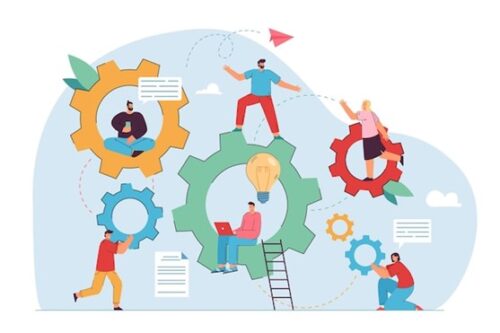In today’s competitive business environment, providing exceptional customer service is essential for any organisation. One powerful tool that can help businesses improve their customer service skills and better understand their customers’ preferences is the Herrmann Brain Dominance Instrument (HBDI). HBDI is a psychometric assessment that measures thinking preferences and can provide valuable insights into how individuals and teams can communicate more effectively, solve problems, and adapt to diverse situations. By leveraging HBDI and incorporating Whole Brain Thinking into customer service training, businesses can create a more dynamic, empathetic, and effective customer service team.
In this comprehensive guide, we will explore the HBDI assessment, its benefits for customer service, and how it can transform your organization’s approach to customer service training.
Understanding HBDI and Whole Brain Thinking
What is HBDI?
The Herrmann Brain Dominance Instrument (HBDI) is a psychometric assessment designed to identify and describe an individual’s preferred thinking styles. Developed by William “Ned” Herrmann, HBDI is based on the Whole Brain Thinking model, which divides the brain into four distinct quadrants, each representing a different thinking preference:
- Analytical (Blue): Logical, fact-based, quantitative
- Practical (Green): Organized, sequential, planned
- Relational (Red): Interpersonal, emotional, intuitive
- Experimental (Yellow): Holistic, creative, innovative
The HBDI assessment evaluates the degree of preference individuals have for thinking in each of these quadrants, helping them understand their own thinking preferences and those of others.
Whole Brain Thinking: Harnessing Diversity for Better Results
Whole Brain Thinking provides a framework for organizations to harness the diverse thinking preferences of their team members for improved communication, problem-solving, and decision-making. By understanding and respecting the different thinking preferences of colleagues and customers, individuals can adapt their communication styles and approaches to achieve greater organizational results.
The Importance of HBDI in Customer Service Training
Enhanced Communication and Empathy
Effective communication is a crucial component of excellent customer service skills. By understanding their own thinking preferences and those of their customers, customer service representatives can tailor their communication styles to better align with their customers’ needs and expectations. This not only leads to more successful interactions but also fosters greater empathy and understanding between the customer service representative and the customer.
Improved Problem-Solving and Decision-Making
Whole Brain Thinking can also help customer service representatives become more effective problem solvers and decision-makers. By developing the ability to tap into different thinking preferences, they can approach challenges from multiple perspectives, leading to more innovative and effective solutions.
Elevated Performance and Employee Engagement
When employees are equipped with the tools to understand and adapt to different thinking preferences, they are more likely to feel confident and engaged in their work. This increased engagement can lead to improved performance and satisfaction, both for the customer service representative and the customer.
Implementing HBDI and Whole Brain Thinking in Customer Service Training
Assessing Individual Thinking Preferences
The first step in incorporating HBDI and Whole Brain Thinking into customer service training is to assess the thinking preferences of your customer service team. This involves administering the HBDI assessment to each team member and providing them with their personalized HBDI profile.
Developing Whole Brain Thinking Skills
Once team members have a better understanding of their own thinking preferences and those of their colleagues, they can begin to develop the skills necessary to adapt to different thinking styles. This may involve learning new communication techniques, problem-solving strategies, or decision-making approaches that take into account the diverse thinking preferences of their team and customers.
Applying HBDI to Customer Service Scenarios
With a solid foundation in Whole Brain Thinking, customer service representatives can begin to apply these concepts to real-world customer service scenarios. This may involve role-playing exercises, group discussions, or case studies that allow team members to practice adapting their communication styles and problem-solving approaches to better serve their customers.
Continuous Improvement and Skill Development
Whole Brain Thinking is not a one-time training exercise but rather a continuous process of improvement and skill development. Encourage your customer service team to regularly reflect on their interactions with customers, identify areas for improvement, and seek ongoing training opportunities to enhance their HBDI and Whole Brain Thinking skills.
Measuring the Impact of HBDI and Whole Brain Thinking on Customer Service
Evaluating Customer Satisfaction
One way to gauge the effectiveness of HBDI and Whole Brain Thinking in your customer service training is to measure customer satisfaction levels. This may involve collecting customer feedback through surveys, reviews, or direct communication and comparing satisfaction levels before and after implementing HBDI and Whole Brain Thinking training.
Analyzing Key Performance Indicators
Another approach to measuring the impact of HBDI and Whole Brain Thinking on your customer service team is to analyze key performance indicators, such as response times, resolution rates, and upsell success. By tracking these metrics over time, you can identify trends and areas for improvement, ensuring your customer service team continues to thrive.
Assessing Employee Engagement and Retention
Finally, it’s essential to consider the impact of HBDI and Whole Brain Thinking on your customer service team’s engagement and retention. Engaged and satisfied employees are more likely to stay with your organization and continue to deliver exceptional customer service, so monitoring employee satisfaction levels and turnover rates can help you gauge the success of your HBDI and Whole Brain Thinking initiatives.
Conclusion
Incorporating HBDI and Whole Brain Thinking into your customer service training can have a profound impact on your team’s communication, problem-solving, decision-making, and overall performance. By understanding and adapting to diverse thinking preferences, your customer service representatives can better serve your customers and achieve greater organisational success.
Embrace the power of HBDI and Whole Brain Thinking to unlock your customer service team’s full potential and create a dynamic, empathetic, and effective customer service experience for your customers.
At WHS AND TRAINING COMPLIANCE SOLUTIONS, we understand the importance of providing exceptional customer service in today’s competitive business landscape. That is why we offer HBDI and Whole Brain Thinking HBDI assessment to help individuals and organisations improve their customer service skills. Our assessments provide valuable insights into an individual’s thinking preferences, allowing them to understand how they process information and make decisions. By identifying their dominant thinking style, individuals can leverage their strengths and develop strategies to enhance their customer service abilities. This not only leads to improved customer satisfaction but also strengthens customer loyalty and drives business growth. With our comprehensive training and assessment solutions, we empower individuals to deliver exceptional customer service that sets them apart from the competition. Contact us today to learn more about how we can help you improve your customer service skills.
Call us for more information on our online, onsite and elearning courses.












